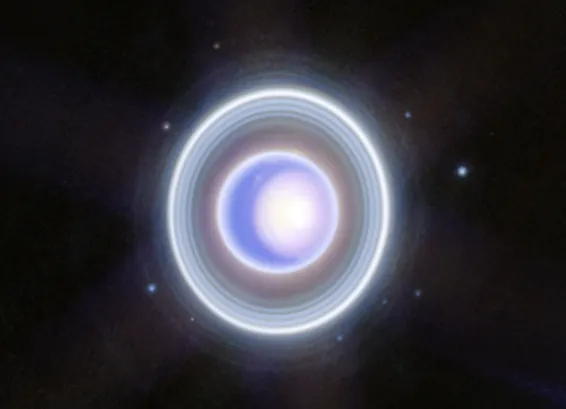Uranus, the seventh planet in the Solar System, located between Saturn and Neptune, has long been a mystery. But by analyzing observations made by NASA’s Hubble Space Telescope over a 20-year period, a research team from the University of Arizona and other institutions has provided new insights into the composition and dynamics of the planet’s atmosphere.
Information about Uranus is limited. What we know is that the planet is composed mainly of water and ammonia ice, its diameter is about 51,000 kilometers, about four times that of the Earth, and its mass is about 15 times greater than Earth’s. Uranus also has 13 rings and 28 satellites.
In January 1986, NASA’s Voyager 2 space probe successfully completed what has been, to date, the only exploration of the planet, conducting a flyby as part of its mission to study the outer planets of the Solar System.
But thanks to this new research, we now know a little more about this icy giant. According to the research, which assessed Hubble images taken between 2002 and 2022, the main components of Uranus’ atmosphere are hydrogen and helium, with a small amount of methane and very small amounts of water and ammonia. Uranus appears pale blue-green because methane absorbs the red component of sunlight.
The research has also shed light on the planet’s seasons.
Unlike all of the other planets in the Solar System, Uranus’ axis of rotation is almost parallel to its orbital plane. For this reason, Uranus is said to be orbiting in an “overturned” position, as shown in the picture below. It is hypothesized that this may be due to a collision with an Earth-sized object in the past.
The planet’s orbital period is about 84 years, which means that, for a specific point on the surface, the period when the sun shines (some of spring, summer, and some of fall) lasts about 42 years, and the period when the sun does not shine (some of fall, winter, and some of spring) lasts for about 42 years as well. In this study, the research team spent 20 years observing the seasons.



